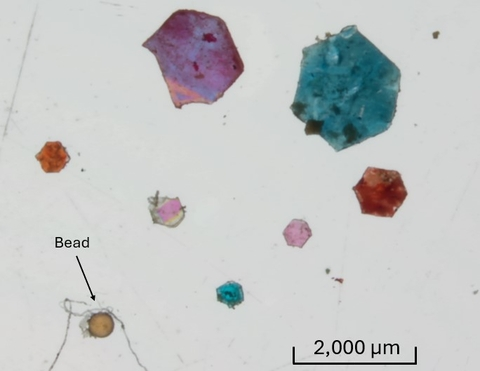An alarming level of microplastic fragments, 2,147 items kg-1 d.w. sediment (average value), were found to be prevalent throughout the intertidal mudflat sediments within the Medina Estuary, a Site of Special Scientific Interest (SSSI).
Microplastics are particles which measure less than five millimetres, and exist in an array of shapes and forms. They cause pollution by entering natural ecosystems from a variety of sources, including run-off from land-based sources and wastewater discharge from Combined Sewer Overflows (CSOs).
Report author Liberty Turrell, a Hampshire & Isle of Wight Wildlife Trust Volunteer and University of Manchester first-class graduate, collected mudflat sediment from 16 sample sites during low tides for her undergraduate dissertation. Analysis of the mud under laboratory conditions discovered three different microplastic shapes: fibres, fragments and beads. Microfibre was the most frequent occurring microplastic shape (99% of all microplastics were microfibres) occurring at all 16 sites.


